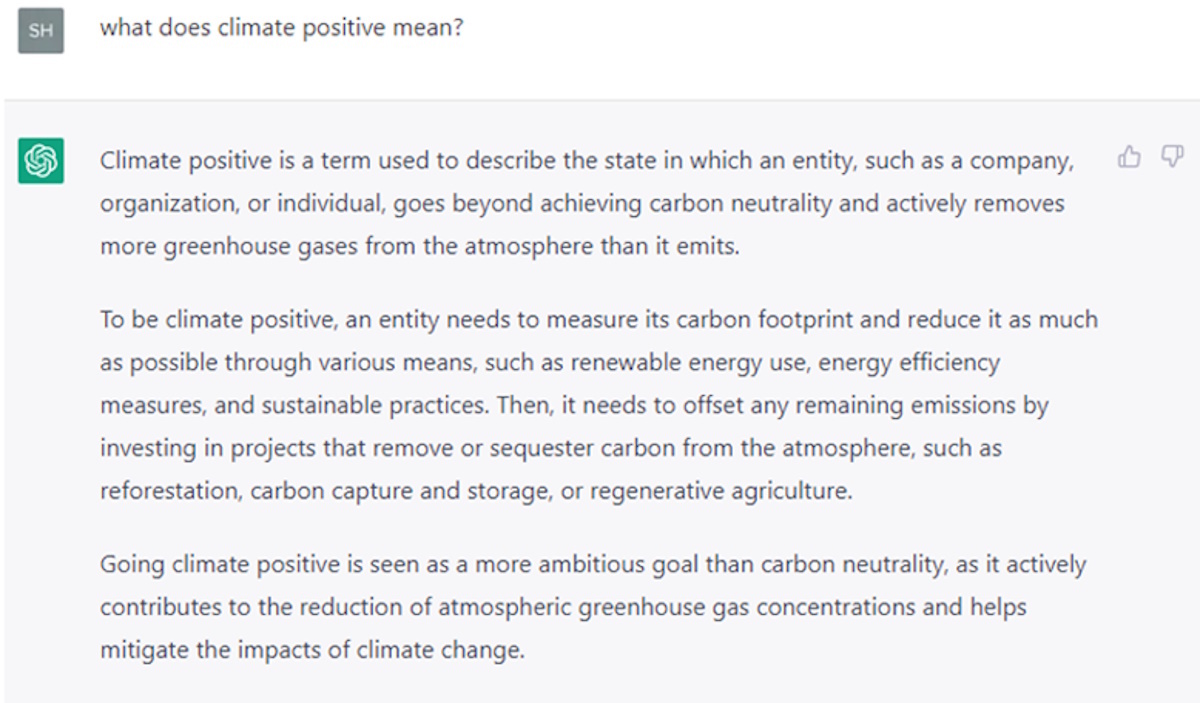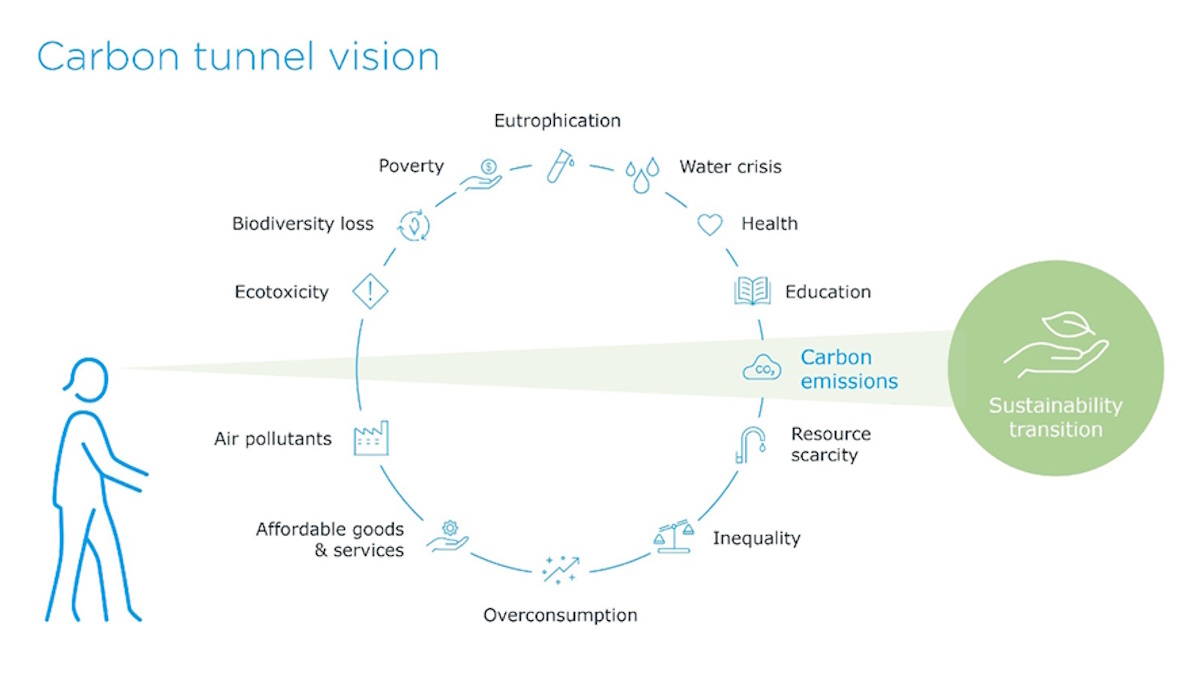Climate positivity: moving beyond Net Zero and carbon

Shane Hughes at Ramboll argues that “net zero carbon emissions” is far from the only goal we should be aiming for when it comes to climate change
You can almost feel the collective eye roll with another addition to the sustainability lexicon. However, our fixation on ’net zero’, whilst important, should not be the sole focus. It is inevitable that we will need to start expanding our understanding of the nuances of sustainability, and the term ’climate positive’ is going to be among those rising up the corporate agenda.
The net zero transition has been a galvanising force for change, but are businesses transitioning in the right direction?
Defining climate positivity
Thankfully, there is growing awareness of the need to switch to a climate positive approach, with some organisations already moving beyond net zero. For instance, The North Face says that its climate-positive beanie is “made from the wool of sheep raised on a farm that removes more carbon from the air than it emits”.
Meanwhile, IKEA’s approach to climate positivity is “reducing more greenhouse gas emissions than the full IKEA value chain emits, while growing the IKEA business”.
The way in which the term climate positive is being used tends to miss some key features. Interestingly, ChatGPT echoes these mistakes:

There is not yet an agreed consensus as to what climate positivity is, but those that do exist tend not to clearly define the boundaries (e.g., inclusion of full value chain emissions) or state the levels of carbon reduction needed before climate positivity can be achieved.
The definition of net zero used to suffer from the same problem, this looseness in the definition enabled greenwashing leading to reduced credibility in that term until Science Based Targets and others started to add more rigour by defining the boundaries and carbon reductions needed.
Also, critical to achieving the best outcomes from climate positivity, will be taking this opportunity to define climate change as being about more than just carbon. The terms net zero and carbon neutrality are locked into being totally about carbon but climate positivity doesn’t have to be locked in the same way.
How should we define climate positivity?
An uncontroversial starting point is to say climate positivity must involve removing more carbon than is emitted. This step is crucially important given that the recent IPCC AR6 B.7.1 makes it clear that only a small number of the most ambitious modelled decarbonisation pathways limit global warming to 1.5°C by 2100 without exceeding this temperature temporarily.
We know that when we creep above 1.5°C it will multiply the catastrophic climate impacts. Staying at net zero means atmospheric CO2 levels will remain dangerously high for longer, exposing us to increased risk. It’s clear that we absolutely must increase our ambition from net zero to net negative removal of carbon emissions from the atmosphere. This will help reduce the warming level faster.
It should be remembered that other GHGs must be considered too, and it is extremely important to note the difference between ‘carbon neutrality’ and ‘net zero’ as a precursor to achieving climate positivity. Net zero must be reached before climate positivity can be successfully achieved because, as mentioned above, the use of the term net zero now comes with strict requirements and demands higher levels of decarbonisation. It also cannot rely on carbon removals or offsets, since they will not be available at a scale that will be available globally.
Aligning nature
Terms like ‘net zero carbon’ or ‘carbon neutrality’ that link climate change to just carbon ignore the inextricable link between climate and biodiversity. Net zero experts have often been accused of having carbon tunnel vision as per the social media meme below.

While true, another dynamic is that the carbon agenda has beaten a path for the biodiversity agenda to benefit from. For example, the Taskforce on Climate-Related Financial Disclosures (TCFD) was followed by the Taskforce on Nature-Related Financial Disclosures (TNFD), carbon focused Science Based Targets (SBT) added Science Based Targets for Nature (SBTN) and finally the UN-convened climate Conference of the Parties (COP) has been followed by the biodiversity COP using a similar format.
These processes and frameworks seek out a clear line of sight between GHG emissions, biodiversity, climate change and beyond. Therefore, as a minimum climate positivity should also incorporate KPIs related to climate resilience and nature positivity.
Systems thinking
Accepting the interdependencies between climate and biodiversity raises questions about what else is linked. Moreover, a carbon-centric approach could - and does - lead to decisions that cause collateral damage to other sustainability indicators on the pathway to net zero.
It seems logical that net zero and carbon negativity can be seen as KPIs among a full set of broader climate KPIs. These are then framed within an overarching climate positive ambition that is joined at the hip with a nature positive ambition and overlapped and interlinked with other sustainability indicators.
This is part of a move towards systems-level thinking that can take our focus from achieving marginal gains in narrowly defined areas to considering what systemic level changes are necessary.
From less harm, to more good
The ministerial foreword of the UK government’s Green Finance Strategy states that “Britain has just 27 years to become a net zero economy effectively ending our contribution to climate change by 2050.” This is a worthy goal, one that is trying to minimise the amount of harm caused to the climate by the United Kingdom. But it also ignores the harm already caused by hundreds of years of carbon emissions and degradation.
Setting our ambitions based on being positive should be about redressing the balance and moving from the notion of doing less harm, to one of doing more good; to more regeneration rather than less degradation.
The below graphic shows the commonly used terms that have been placed on the spectrum of doing less harm or more good.

Applying regenerative thinking should help reverse the negative impacts that are already in train and mitigate against natural feedback loops, which self-reinforce damage to the climate.
A positive conclusion
Climate positive lends itself to the unequivocable need to reach net positive GHG emissions rather than net zero. The term “climate” positive (see our definition) enables a less carbon centric systems view of climate solutions and the term “positive” shifts us away from the net zero do-no-harm thinking towards regenerative thinking.
The drive towards net zero has been an important, noble step, but it should be considered only the first step on a much longer journey.
It is great to see the movement already taking place in this regard. Defining and adopting a climate positive approach is just another small, but important, step on this journey. This then better aligns with the nature positive, people positive, water positive, waste positive and other more circular and regenerative sustainability goals more commonly seen today.
Shane Hughes is UK Director of Corporate Net Zero Services at Ramboll
Main image courtesy of iStockPhoto.com

Business Reporter Team
Most Viewed
Winston House, 3rd Floor, Units 306-309, 2-4 Dollis Park, London, N3 1HF
23-29 Hendon Lane, London, N3 1RT
020 8349 4363
© 2025, Lyonsdown Limited. Business Reporter® is a registered trademark of Lyonsdown Ltd. VAT registration number: 830519543





